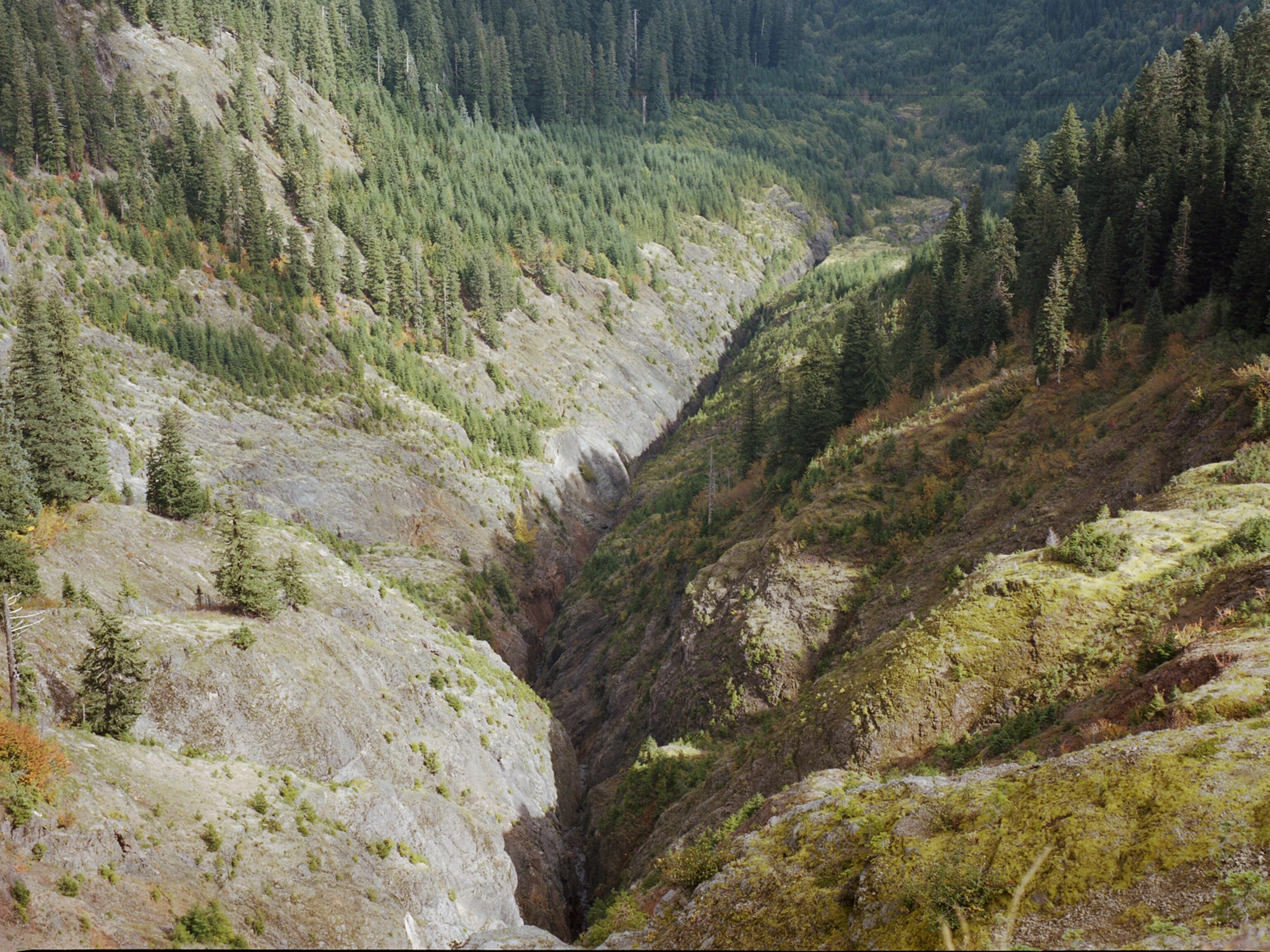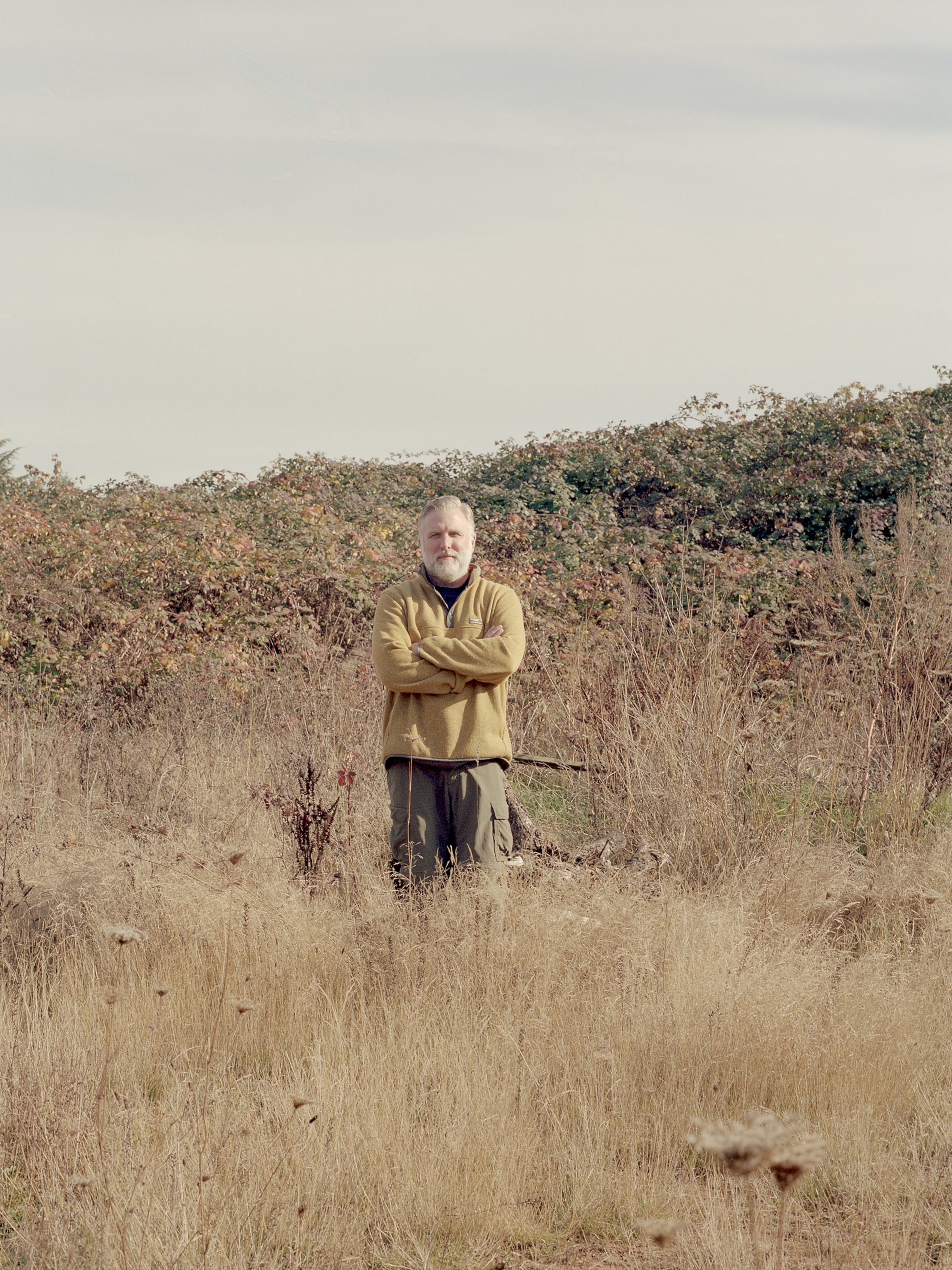Follow Bigfoot’s mythical steps to discover wild America
It may sound kitschy, but traveling to ‘Sasquatch country’ provides a chance to see some of America’s most vivid, far-flung places.

To skeptics, Bigfoot sightings in North American forests are evidence of a collective delusion.
To cryptozoologists—people who search for mythical creatures, including Scotland’s Loch Ness Monster and Latin America’s chupacabra—they represent a nearly universal desire to understand the unknown. Whether people believe in the beasts or not, trying to track them down (“going bigfooting,” as enthusiasts say) offers an excellent opportunity to explore America’s off-the-beaten path places.
“I’ve looked for Sasquatches in 46 states and five continents,” says Cliff Barackman, a Bigfoot investigator and the owner of the North American Bigfoot Center. “The Sierra Nevada, the tundra of Alaska, the craggy river bottoms of South Dakota—[Sasquatches] live in wonderful, wild areas.”



Although investigators have yet to prove Bigfoot’s existence, organizations such as the Bigfoot Field Researchers Organization (BFRO) compile and map alleged Bigfoot sightings, investigating each report and labeling it based on its credibility and location. Their research often serves as a guide, bringing travelers to regions far less traveled.
From the forests of the Pacific Northwest to the remote pine flatwoods in central Florida, destinations where an elusive ape-like creature has reportedly been spotted are emblematic of the diversity and breadth of America’s beautiful places.
Here’s why searching for Bigfoot is one of the best ways to get to know the lesser explored regions of the U.S.—and how travelers could play a key role in preserving their lore.
Connecting with nature
Building a connection with natural spaces might be the most tangible, positive outcome of people “going bigfooting,” says Cindy Caddell, an archaeologist for the U.S. Forest Service and an investigator and expedition leader for BFRO.






“It’s about getting into nature with like minded people to enjoy the outdoors and see the countryside,” Caddell says. “And who’s to say there’s not an undiscovered primate out there?”
When Caddell leads groups on three-day to seven-day expeditions into the central Cascades, she tries to incorporate real connections with the land: plant identification classes, nature walks, and Indigenous history lessons. As Barackman puts it, “Bigfoot is a multidisciplinary subject.”
(Ideas and tips for planning the ultimate camping adventure.)
While travelers can “go squatching” almost anywhere—at least in the U.S.—the Pacific Northwest is a hotbed for alleged Bigfoot encounters.
Dozens of people have reported spotting Sasquatch in the Klamath-Siskiyou Mountains of northwest California and southwest Oregon, which led to the creation of the more than 300-mile-long Bigfoot Trail. The path takes hikers through six wilderness areas, a national park, and several major watersheds in this rarely visited corner of the U.S.
Take in some of Northern California’s best views on the 88-mile-long Bigfoot Scenic Byway. Along the route explore Willow Creek, California—widely considered the official gateway to Bigfoot Country—and the Hoopa Tribal Museum, which features Indigenous crafts, ceremonial regalia, and redwood canoes used by the local Hoopa, Yurok, and Karuk tribes.
Preserving the land
Searching for an ape-like creature not only encourages travelers to experience wild open spaces but also motivates them to become stewards of the land. Three different counties in Oregon and Washington State have designated land as “Sasquatch Protection and Refuge Areas” (regions where hunting for Bigfoot is prohibited) due to the possibility of the creature’s existence. The most recent designation passed in Washington State’s Grays Harbor County in April.
Although these resolutions aren’t legally binding, the strategy of leveraging charismatic creatures to protect habitats is a common practice, according to conservation scientists. Organizations often use well-known mammals, such as the gray wolf, to preserve large swathes of land—thereby protecting hundreds of smaller, obscure species that rely on the same habitat.
“Psychologically, it helps to have iconic species as the focus,” says Gretchen Daily, a senior fellow at the Stanford Woods Institute for the Environment. “We need the billions of microbes in soil to make our immune systems function, but no one is going to get fired up over those.”
(Eight real-life “fantastic Beasts” and where to find them.)
The Edge of Existence initiative promotes bizarre and unusual threatened species in an effort to build public support for conservation. In 2015, a trail camera set up to capture Bigfoot instead got a glimpse of a Humboldt marten—a small, weasel-like forest creature previously thought to be extinct. In part because of that evidence, the marten was finally listed as threatened in 2020.






Scientists estimate that there are hundreds of mammals that have not been discovered yet, but only five percent of the public lands and waters in the U.S. are currently protected. The Biden White House set a goal to bring that number up to 30 percent by 2030, but the U.S. loses a football field-sized chunk of habitat every few minutes, potentially exterminating species before anyone realizes they exist.
“It’s a race to get people to care about and defend green space while warding off never-ending development pressure,” says Tierra Curry, a senior scientist with the Center for Biological Diversity. “If people are advocating for Bigfoot, then they’re advocating for protecting those lands. That puts us on the same team.”
Myth and magic
Searching for Bigfoot allows adventurers to connect with something bigger than themselves and believe there is still something magical and unknown about America’s wild spaces.
“Bigfoot preserves some of the wonder of childhood, and some of the magic of the 18th and 19th centuries of exploration," says Peter Dendle, a professor of folklore at Penn State Mont Alto.
Before the 19th century, when stories about the mysterious ape man began circulating in the American West, a rich oral tradition of Sasquatch stories among Indigenous communities tells of a nearly supernatural being lurking in the woods. In some legends, Sasquatch is an object of fear, at other times a benevolent force—but the stories are always reverential.
(How one artist turns trash into trolls.)
Bigfoot stories, at their core, offer a pathway toward a paradigm shift in our relationship with the natural world. In both childhood and earlier centuries, humans tended to operate under the belief that the natural world was infinitely vast. Part of that belief absolves us of any responsibility to act as responsible stewards of the land.
“Spending time in the woods connects you with something you forgot you had a connection to,” Barackman says. “We can vote to save public land, finding a balance between the needs of society and the needs of wildlife, and by doing that, we’ll accidentally be helping ourselves.”
You May Also Like
Go Further
Animals
- This ‘saber-toothed’ salmon wasn’t quite what we thoughtThis ‘saber-toothed’ salmon wasn’t quite what we thought
- Why this rhino-zebra friendship makes perfect senseWhy this rhino-zebra friendship makes perfect sense
- When did bioluminescence evolve? It’s older than we thought.When did bioluminescence evolve? It’s older than we thought.
- Soy, skim … spider. Are any of these technically milk?Soy, skim … spider. Are any of these technically milk?
- This pristine piece of the Amazon shows nature’s resilienceThis pristine piece of the Amazon shows nature’s resilience
Environment
- This pristine piece of the Amazon shows nature’s resilienceThis pristine piece of the Amazon shows nature’s resilience
- Listen to 30 years of climate change transformed into haunting musicListen to 30 years of climate change transformed into haunting music
- This ancient society tried to stop El Niño—with child sacrificeThis ancient society tried to stop El Niño—with child sacrifice
- U.S. plans to clean its drinking water. What does that mean?U.S. plans to clean its drinking water. What does that mean?
History & Culture
- Meet the original members of the tortured poets departmentMeet the original members of the tortured poets department
- Séances at the White House? Why these first ladies turned to the occultSéances at the White House? Why these first ladies turned to the occult
- Gambling is everywhere now. When is that a problem?Gambling is everywhere now. When is that a problem?
- Beauty is pain—at least it was in 17th-century SpainBeauty is pain—at least it was in 17th-century Spain
- The real spies who inspired ‘The Ministry of Ungentlemanly Warfare’The real spies who inspired ‘The Ministry of Ungentlemanly Warfare’
Science
- Here's how astronomers found one of the rarest phenomenons in spaceHere's how astronomers found one of the rarest phenomenons in space
- Not an extrovert or introvert? There’s a word for that.Not an extrovert or introvert? There’s a word for that.
- NASA has a plan to clean up space junk—but is going green enough?NASA has a plan to clean up space junk—but is going green enough?
- Soy, skim … spider. Are any of these technically milk?Soy, skim … spider. Are any of these technically milk?
- Can aspirin help protect against colorectal cancers?Can aspirin help protect against colorectal cancers?
Travel
- What it's like to hike the Camino del Mayab in MexicoWhat it's like to hike the Camino del Mayab in Mexico
- Is this small English town Yorkshire's culinary capital?Is this small English town Yorkshire's culinary capital?
- This chef is taking Indian cuisine in a bold new directionThis chef is taking Indian cuisine in a bold new direction
- Follow in the footsteps of Robin Hood in Sherwood ForestFollow in the footsteps of Robin Hood in Sherwood Forest







